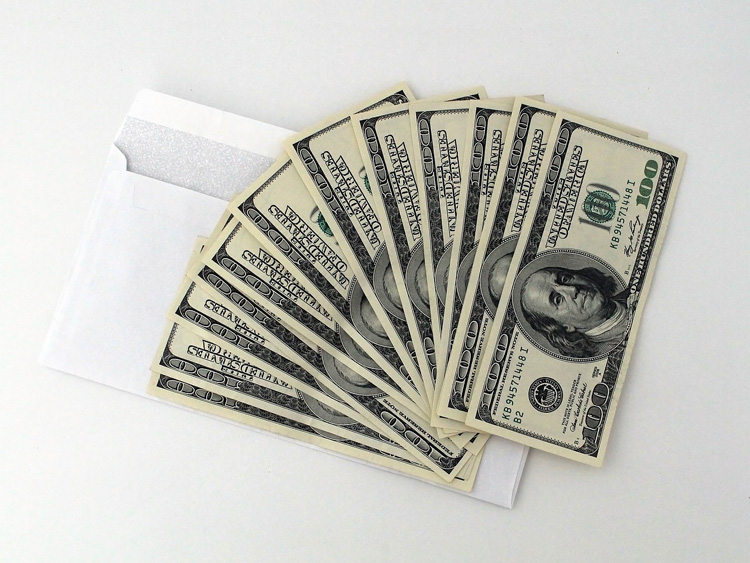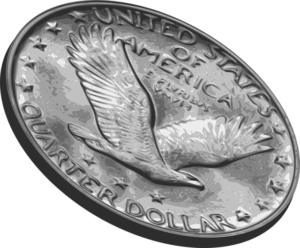9 Fundraising Games to Liven Up Your Next Auction Event
 How to Keep Your Guests Excited with New Games and Fun Activities
How to Keep Your Guests Excited with New Games and Fun Activities
Auction and fundraising games bring fun and excitement to events that sometimes, even with the best of planning and the sincerest of missions, can still sometimes feel like a slog.
When recommending auction games to try, the core principles ProActive Content uses are that all fundraising games must:
- – Be easy for the attendees to understand
- – Be easy for the nonprofit to administer and manage
- – Not take too much auction time
- – Be fun!
Are you getting the theme here? Easy and fun.
Not everyone has to play every game. But your attendees are a diverse group in terms of what they enjoy and how much they can spend. So give everyone something they’ll be excited to participate in.
Here are 9 fundraising games you can use at almost any charity auction.
9 Live Auction Fundraising Games
1. Golden Ticket
Also known as the Pick of the Live, this is a terrific way to make more than you normally would from one live auction item.
How It Works:
You sell a limited number of tickets (50, 75, 100 – less than half of your guest count) for $100 before the live auction begins. If you haven’t sold them all when the live auction is about to begin, a good auctioneer can usually sell the last few on the spot.
Then, before the live auction starts, one ticket is drawn, and the winner gets to choose any live auction item they want. So, if you have an auction item that’s worth $1000, the winner can choose to take it for just the price of their ticket – a major steal. Because the value of the prize is so great, and they get to choose, the Golden Ticket is an easy sell. 
But it’s also great for you. If you sell just 50 tickets for $100 each, you just made $5000. Few items sell for that much at most auctions.
Limiting the number of tickets sold is critical to the success of the Golden Ticket, because it increases people’s odds of winning since they know it’s just 1 of 50, or 1 of 100, as opposed to 1 out of however many people are at the event. Plus, scarcity sells.
Some variations:
- – Change the sale price based on what’s appropriate for your audience
- – Begin selling tickets pre-event over email, and hype up the limited number available (this is also smart because you are explaining the process before the event)
- – Exclude live auction items that have a minimum purchase requirement (such as a trip where you have to pay a portion to the donor)
If you do this game for multiple auctions, use winners from previous years in your emails to help explain the game and get people excited about what they could win.
I love this game, and that’s why I put it at the top of the list. It’s an easy money-generator, and keeps people engaged and in suspense. It also makes them look through the auction catalog (a good thing!), because they need to decide which item they’ll choose if they win.
2. 10X Envelope Cash Grab
 For the person who likes games of chance with big payoffs, this is the simplest and best fundraising game I’ve seen.
For the person who likes games of chance with big payoffs, this is the simplest and best fundraising game I’ve seen.
How It Works:
As people enter your auction, offer them an envelope and tell them they can put between $1 and $20 inside, along with their name or bidder number. Before the live auction, the auctioneer will draw one envelope.
However much money that person put in their envelope, they win 10 times that amount, on the spot! And your charity gets to keep the rest. The most you’ll have to give away as a prize is $200, but if just 100 people give an average of $5, you’d make $500, a $300 effortless minimum profit.
But once people understand the game, they’ll give higher amounts, because who wants to win $10 when you could win $200?
Many variations of this game exist. You can find a few here at Greater Giving.
Why should you draw the winner before the live auction? Because that person will be more likely to spend more since they just won!
3. The Thin Green Line
Yes, use green, because green is the color of money. This is a silent auction game, and it’s a way to get people to bid higher amounts.
Try these 8 next-level silent auction strategies too.
 All it takes to play this fundraising game is a desirable item you might normally use in a raffle, and a green sharpie.
All it takes to play this fundraising game is a desirable item you might normally use in a raffle, and a green sharpie.
How It Works:
On each silent auction bid sheet, draw a green line (or green box) around one of the bid amounts. Ideally, you’d choose an amount that’s about two thirds of the way down the list.
For anyone who bids that amount on any of your silent auction sheets, they get entered into a drawing for the prize. So, the only people who get into the drawing are people who bid on the green line. It doesn’t matter if someone outbids them on that silent auction item. Just by bidding on that line, they get in the drawing.
So in theory, you could bid on the green line on ten different silent auction cards, get outbid every time and thus spend nothing, and yet still win the Thin Green Line drawing.
This is smart because it gives your attendees a reason to move farther down the bid sheet, thus increasing your silent auction revenue.
BUT – you must explain this game to them. I went to one event where all the sheets had these green lines, but no one knew what they meant until halfway through the silent auction.
Make sure your silent auction volunteers understand the game too so they can remind guests what it means and explain it to anyone who “missed the memo.”
4. Prize-In-A-Box
This is most commonly done with jewelry, but you could do it with any desirable prize with value at least above $200. The bigger the value, the more you can charge to play.
How It Works:
Simply put out a stack of boxes (or envelopes or other containers), and put a prize or a winning ticket in one of them. Tell your guests either what the prize is, or the value of the prize if you want to keep it a secret.
Guests can buy one or more boxes for a fixed price, and then they get to open them at some point in the event.
For variations, you could also put prizes in more than one box, or even in all the boxes, with most of them being low-cost fun prizes.
Though all nine of the fundraising games on this list are easy, Prize-In-A-Box is probably the least easy from a management/planning standpoint, since you have to prepare 50 or 100 boxes/envelopes.
5. Heads or Tails
Another super easy game – all you need is a mid-value prize like a smartphone or game console.
How It Works:
Everyone who wants to play pays a fixed price, usually something like $25. It’s good to give each player a trinket to put around their neck or wrist. This prompts other guests to ask them what the trinket is for, and will get more people to play. But it also gives you a quick visual way to confirm that the winner actually paid to play.
 Then, at some point during the live auction, the auctioneer leads people through the game, which takes just a few minutes.
Then, at some point during the live auction, the auctioneer leads people through the game, which takes just a few minutes.
Everyone who’s playing stands up. The players put their hands on either their head or their ‘tail’ (their butt – not the person’s next to them). Then, a volunteer comes up and flips a coin for the auctioneer.
If the coin reads heads, the people with hands on their tails sit, and those with hands on their heads stay standing. If tails, vice versa. Keep flipping the coin and eliminating people until you’re down to just one person, and they win the prize.
Again, super easy, and more fun and participatory than a typical raffle.
6. Wine Toss
There are so many variations of this fundraising game, you can look them up and find one that works for you. A lot of them depend on how many bottles of wine you acquired.
 One variation we saw used with great success was to put wine corks into mystery bags, either one, two, or three corks per bag. Then, the player buys a bag for $50 (or whatever price seems right for your audience and number of bottles), and gets to take however many bottles as the corks in their bag.
One variation we saw used with great success was to put wine corks into mystery bags, either one, two, or three corks per bag. Then, the player buys a bag for $50 (or whatever price seems right for your audience and number of bottles), and gets to take however many bottles as the corks in their bag.
When they’re gone, they’re gone!
Again, lots of variations exist – wine pulls, wine walls, ring tosses, etc. But games involving wine usually make a lot of easy money, give good exposure to local wineries, and appeal to many people at your auction.
7. Raffles
Raffles don’t need much explanation of course, but they’re an easy revenue generator. As long as you have good prizes (or prize baskets), you’ll get lots of participation and make a couple thousand in easy revenue. A good starting price is $10 per ticket.
Ways to increase participation include:
- – Have two or more prizes, and let people choose which ones to put their tickets in
- – Offer ticket bundles, like 3 for $25 – almost everyone will do it for a greater chance to win, and you’ll make way more revenue
- – Use free raffle tickets as incentives for buying auction tickets before your early bird deadline
8. Banned Word Bid
The Banned Word Jar is a similar fundraising game, but we’re not a fan of that one because, for guests, it feels like someone is stealing their money every time they say the banned word on accident.
Personally, that would get very annoying and some guests will just stop paying. You don’t want your guests to get annoyed at having to give money, even if it’s just a dollar. Wrong mindset for a fundraising auction!
Instead of a jar, have a Banned Word Bid, and turn it into a raffle variation.
How It Works:
Choose a word or phrase that represents some kind of enemy or opposition force that works against your nonprofit’s mission. A food bank might use the word “hunger,” for instance. A bit obvious, but you get the point.
Guests can pay a small entry fee, like $5, and put their tickets in the banned word container.
From there, how you award a prize is up to you. You could just draw a winning ticket like a normal raffle, but now you’ve got people thinking about the banned word, which is kind of the point.
You could also make a prize that’s more connected to your nonprofit, like a T-shirt, or lunch with the founder, or a free tour of your facility, if appropriate. Make the prize something that will engage them with your mission, and now you’re putting meaning behind the banned word.
Get creative!
9. Last Hero
This one’s a bit tricky to explain sometimes, but once people see how it works, they get it. To make it work though, you must have a prize that people really, really want. We’ve seen this game bomb, and we’ve seen it raise thousands.
Unlike most fundraising games, this one highly depends on the prize.
How It Works:
Toward the end of your live auction or perhaps your fund-a-need portion, you offer a prize for a low price (like $50) that will be awarded to the ‘last bidder’. What does that mean?
Well, the first bidder will bid $50. But then, another bidder can bid $50 after them. And another after that. This continues until a final person bids and no one bids after them. The bid never goes up. It’s always $50 (or whatever you make it).
When the prize is highly desirable, some of the same people will bid over and over again, competing against someone else.
Your auctioneer must explain this game clearly. If the same bidder bids $50 ten different times, they have spent $500. But if someone keeps bidding after them, they lose the prize unless they bid again. Finally, people will start to decide they don’t want to spend any more, and whoever bids last will get the prize.
What’s a desirable prize? Depends on your audience. Some examples include:
- – Local attractions that people rave about
- – Sports jerseys signed by popular local sports heroes
- – Video game consoles
- – TVs
It has to be an item with monetary value much higher than the bid amount. So if the TV is worth $750, then a guest could bid ten times and it’s still a great deal. Or, it must have high perceived value, such as a signed jersey or unique experience.
Final Word on Fundraising Games
Whatever fundraising auction games you use, it’s important to keep changing it up. Don’t do the same thing every year. You don’t want a predictable fundraising event.
Keep it fun. Keep it fresh. And most of all….. keep it easy.
Want more content? Get weekly nonprofit fundraising and copywriting tips, strategies, and motivations in the ProActive Insights newsletter.

